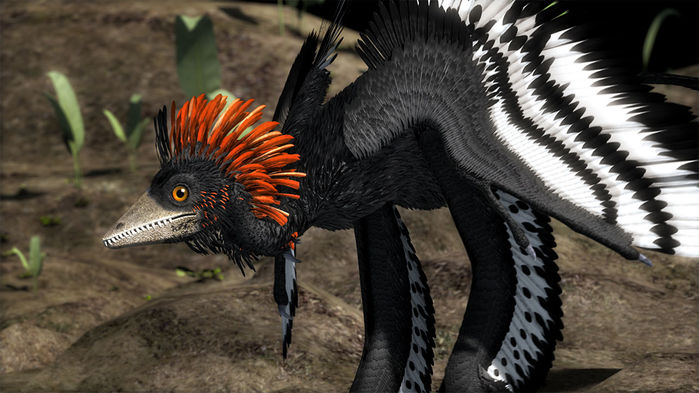
Scientists have long known that many early dinosaurs, the ancestors of today’s birds, were covered in feathers, likely for warmth and to attract mates. But no one knows exactly when—and how—these feathered dinos took flight. Now, molecular evidence from feathered dinosaur fossils reveals how the key proteins that make up feathers became lighter and more flexible over time, as flightless dinosaurs evolved into flying ones—and later, birds.
All modern land animals with backbones have keratins, proteins that make up everything from fingernails and beaks, to scales and feathers. In humans and other mammals, α-keratins form the 10 nanometerwide filaments that make up hair, skin, and nails. In crocodiles, turtles, lizards, and birds, β-keratins form the even narrower, more rigid filaments that build claws, beaks, and feathers.
Using the whole genomes of dozens of living birds, crocodiles, turtles, and other reptiles, scientists have built over the past decade a family tree of these animals based on how their β-keratins changed over time. Among the revelations: Modern birds have lost most of their α-keratins, but β-keratins in their feathers have become more flexible, thanks to a missing swath of glycine and tyrosine amino acids that make claws and beaks rigid. This suggests that the transition to flight required both changes to take place.
Now, researchers have shown this directly by analyzing the α- and β-keratins in a handful of exceptionally preserved fossils from China and Mongolia. The researchers, led by paleontologists Pan Yanhong of the Chinese Academy of Sciences in Beijing and Mary Schweitzer of North Carolina State University in Raleigh, designed separate antibodies to bind to identifying segments of various α- and β-keratin proteins preserved in the fossilized feathers of five species that lived between 160 million and 75 million years ago. The antibodies were labeled with fluorescent tags that light up whenever they bind to their targets.
The feathers of Anchiornis, a crow-size feathered dinosaur that lived 160 million years ago, lit up to reveal the flexible truncated β-keratin found in modern birds, the researchers report today in Proceedings of the National Academy of Sciences. But the dinosaurs—which predate the first recognized bird, Archaeopteryx, by 10 million years—had even more α-keratins, which are largely absent from bird feathers today. Given that, plus structural differences revealed by electron microscopy analysis, it’s likely that Anchiornis feathers weren’t suitable for flight, Schweitzer says, but represent an intermediate stage in the evolution toward flight feathers.
Fossilized feathers from a 130 million-year-old small flightless dinosaur called Shuvuuia (which is not an ancestor to today’s birds) reveal that, like modern birds, it lacked α-keratins. But unlike Anchiornis, its feathers were still made up of the larger, more rigid β-keratins. “We’re beginning to uncover the mosaic pattern of feather evolution,” Schweitzer says, which suggests the transition of feathers to flight required both the mutations that eliminated most α-keratins and the truncated flexible β-keratins.
“This type of work is every evolutionary biologist’s dream,” says Matthew Greenwold, an evolutionary biologist at the University of South Carolina in Columbia, who helped build the earlier β-keratin family tree. Taken together with modern genetic evidence, the new finding suggests that during the transition to flight, the β-keratin gene was duplicated many times in the genomes of some dinosaurs. As the animals evolved, some of the extra copies then mutated into the truncated form that made flight possible. That not only allowed feathered dinosaurs such as Archaeopteryx to cruise the skies around 150 million years ago, but it also gave rise to all the crows, finches, starlings, and eagles we have with us today.























